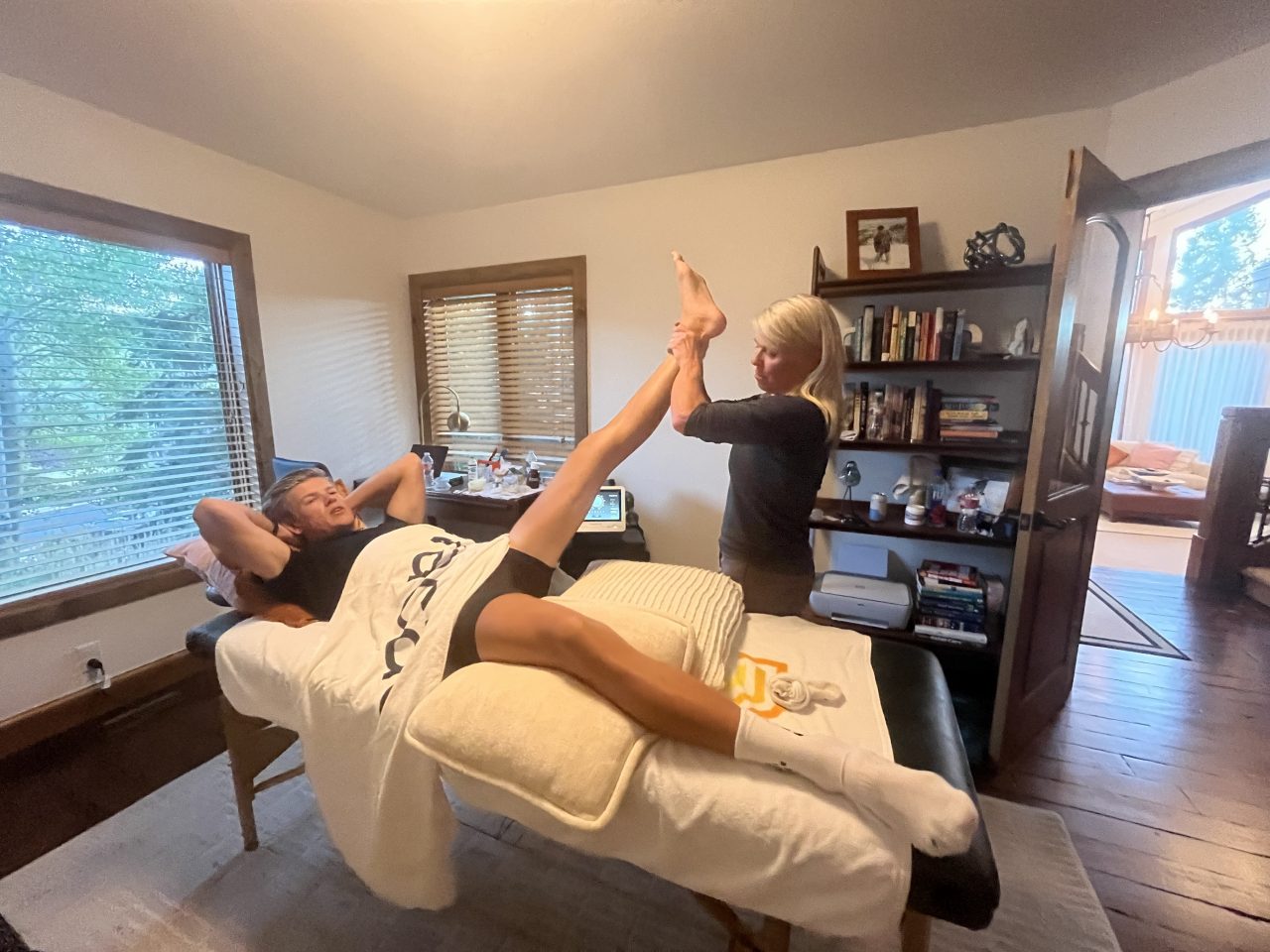
PARK CITY, UTAH — Megan Rowlands Stowe was mostly retired from her career as a physical therapist when Johannes Høsflot Klæbo came to her Utah home for dinner last year.
Klæbo, 26, is from Norway — where, as a seven-time Olympic medalist in cross-country skiing, he’s a superstar. But for weeks, he’d been training in Utah, where a lingering hamstring injury was bothering him when he arrived at Stowe’s house.
Stowe, 57, has her own history in elite sports — namely, as a longtime physical therapist for the star athletes of the Milwaukee Bucks, the NBA franchise. And as an avid cross-country skier herself, she knew Klæbo had been working out in Utah. She had already offered, through friends, to help with his injury.
Klæbo and his father, Haakon, who is also his manager, had declined Stowe’s offer; Johannes had just started a new treatment program in Norway. “We heard she has been working in the NBA, and I was like, ‘Fine, good for you,’” Johannes said. “A lot of people wanted to help at that time.”
[Read more: That guy rollerskiing around Utah by himself? Yeah: it’s 5x Olympic champ Johannes Klæbo]
But over salmon at Stowe’s house, the injury came up in conversation, and before Klæbo left, he showed her his MRI. Then, he and Stowe went downstairs for a quick exam.
Stowe’s home in the city of Midway has equipment she uses in her work: a hot tub, a cold plunge pool and a full treatment room with workout equipment. And the after-dinner treatment session quickly wore away Klæbo’s skepticism.
“I was like, ‘Holy shit,’” Klæbo said. “I felt like, this is what I’ve missed in my career.’”
Since then, Stowe has become a key member of Klæbo’s tiny team, taking multiple trips to Europe to support him.
“I call them my Norwegian family, and Johannes my little brother,” Stowe said.
Klæbo’s first session with Stowe came at the very end of his Utah training camp last year. He went back to see her the next day, but then had to return to Norway.
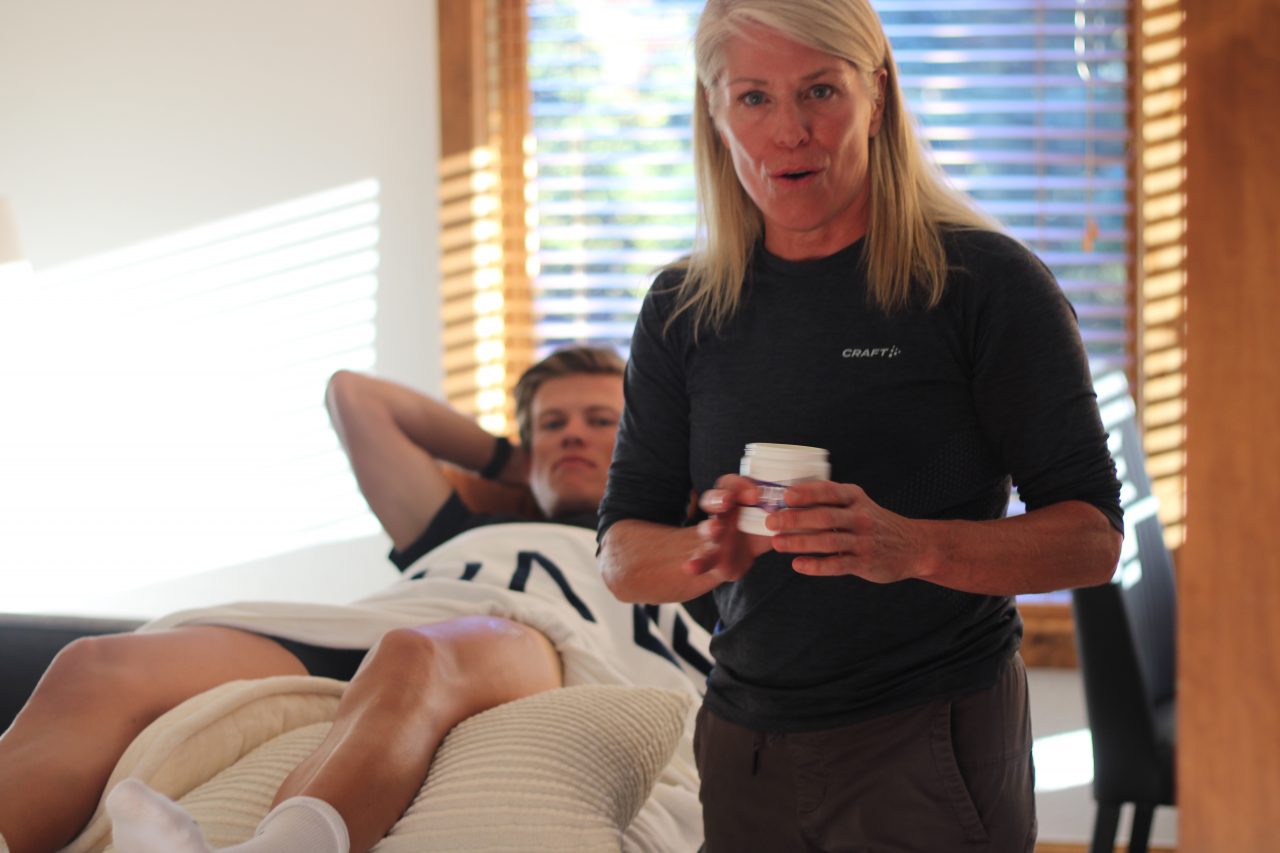
Soon afterward, Stowe found herself invited to Europe — to Livigno, Italy, for another Klæbo altitude camp, and then to the first races of the winter, in Norway. Beforehand, Norwegian coaches had said Klæbo’s injury might force him to skip those season-opening events; instead, he won them both, then won his first four World Cup races of the year.
While Klæbo’s injury had shown up in his hamstring, Stowe said she helped determine that a tight ankle was a big contributor to the problem, along with imbalances between the muscles in his chest and back.
At the end of the season, Klæbo spent another week and a half in Utah, where Stowe treated him for six or seven hours daily.
Klæbo would have a morning physical therapy session, then Stowe and his father would spend some time outside while Johannes slept. Then, they’d return for another session, and Klæbo would eat dinner and go to bed.
“That was, like, 10 days of a lot of pain,” he said.
The work with Stowe is one of the things that’s drawn Klæbo back to Utah multiple times — including for another altitude camp last month, where the two did a joint interview and treatment session.
The thing that distinguishes Stowe from the other physical therapists that Klæbo has worked with, he said, is her commitment to hands-on treatment, known as manual therapy.
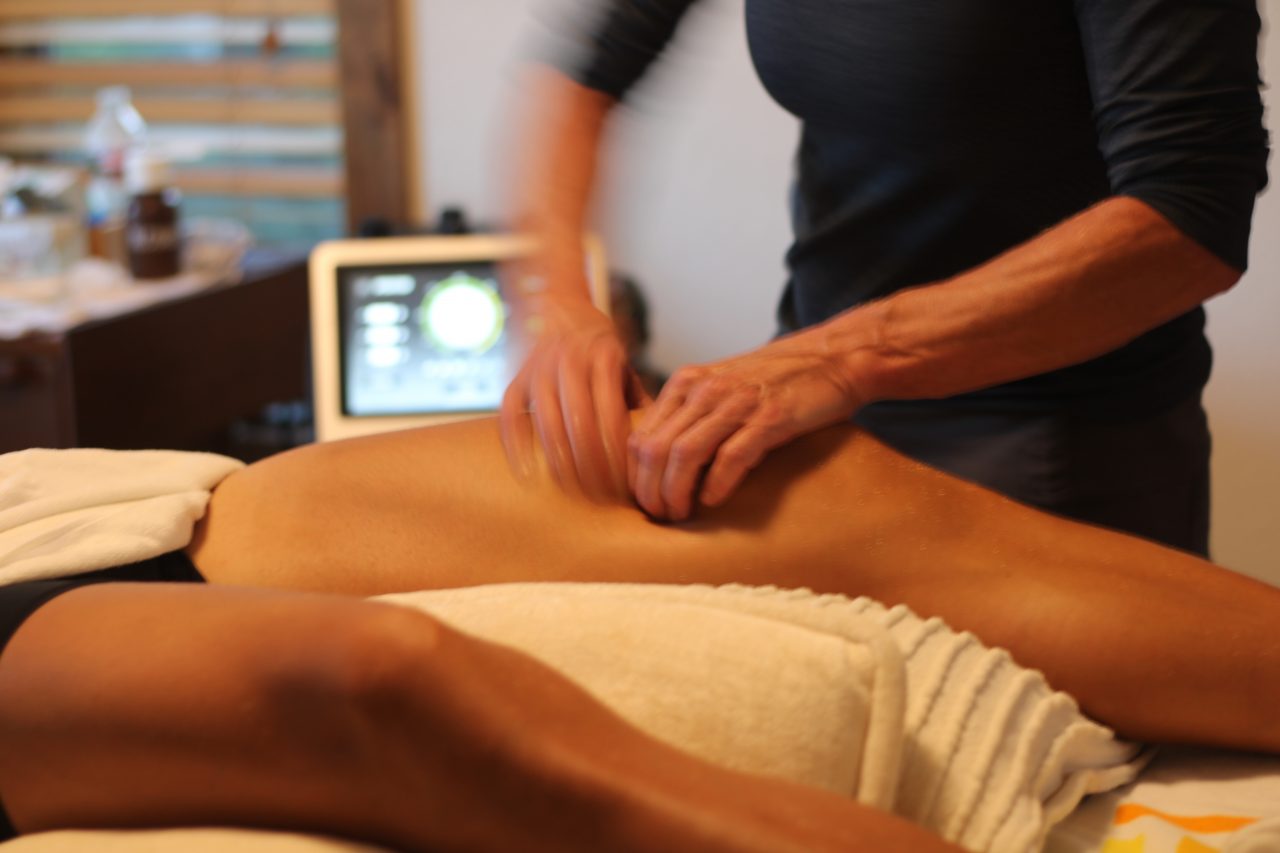
That was clear during the 90-minute treatment session, where Stowe’s sole focus was the front side of Klæbo’s left leg: hands-on soft tissue work, and dry needling, a technique to release muscle tension. She would treat the other leg after dinner together, along with Haakon and Pernille Døsvik, Johannes’ girlfriend.
“Most physiotherapists that are going through school now, they learn to work with patients for 30 minutes to an hour,” Klæbo said. Stowe, he added, “works way deeper, and she works longer, on every kind of area.”
Such lengthy treatments are very unusual, according to Brooke Lewis, an Alaska-based physical therapist who’s worked with members of the American cross-country ski team. But they could still be helpful given Klæbo’s long hours of training, and the likelihood his injury built up over a long period of time, she said.
“If he’s noticing that big of a difference, it’s hard to refute,” Lewis said. “If they’ve got a good thing going, they’ve got a good thing going.”
[Listen to the Devon Kershaw Show: Johannes Høsflot Klæbo has a lot to say. We listened.]
Stowe said she can sustain the physical demands of her work because she’s built up stamina in three decades as a physical therapist, and also because she’s been a rock climber.
Stowe actually started her physical therapy practice in the back of a Wisconsin climbing gym. She connected with the Bucks basketball team in her first week, when a surgeon she knew asked if she could evaluate a player: Glenn Robinson, the now-retired NBA all-star known as the “Big Dog.”
“And then, as I was working with him, Ray Allen” — now an NBA Hall of Fame member — “asked if I would look at him,” Stowe said.
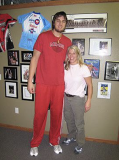
After a year of treating players outside of games, the team’s trainer told Stowe to show up at the Bucks’ first pre-season matchup.
“I’m like, ‘Wait a minute, I’ve never covered games before. That’s not part of the deal,’” she said. “They were like, ‘no, no — we fired our physical therapist. You’re our physical therapist.’”
Stowe worked for the Bucks for 17 years; Bud Selig, the former commissioner of Major League Baseball, was also a longtime client. But Stowe was never a big basketball or baseball fan — she was more interested in endurance sports, like adventure racing. She also got into cross-country skiing in her late 20s, and has raced the American Birkebeiner nine times.
After selling her physical therapy practice, Stowe moved to Utah in 2020 and spent much of her time playing outside before she got involved in the local cross-country skiing community. That community ultimately connected her with the Klæbos.
Her work with the Norwegian superstar — for which, she said, she’s paid “very well” — has been an honor, but also just fun, she added.
“To be introduced to the best endurance athlete in the world was kind of icing on the cake, when I thought I was done with my career,” she said.
In Europe, the Klæbos have supplied her with gear so that she can go skiing while Johannes trains; she’ll also tape videos and observe some of his harder workouts. They talk about strength workouts, nutrition and other elements of his training program.
She and Johannes have developed an easy working relationship, each of them said. Their hours of conversations have improved his English, but Stowe also understands that sometimes, he’s too tired or grouchy to talk.
“I can sense it,” she said. “I just leave him alone.”
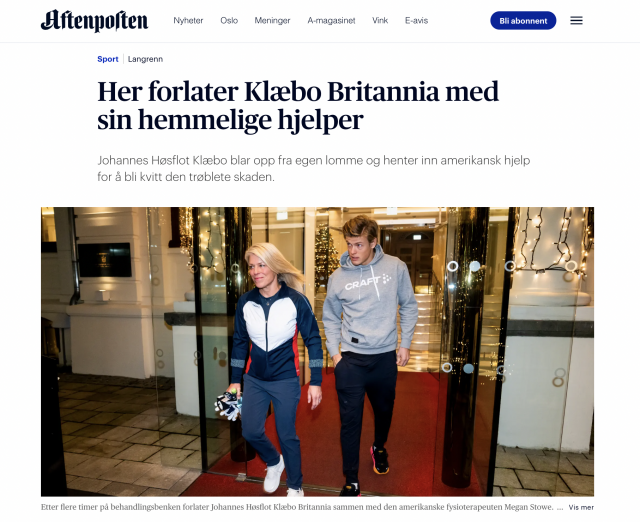
Their work together has put Stowe on the pages of Norwegian tabloids, with photographers sometimes taking her by surprise. Norway’s fervor for skiing, she said, was simultaneously shocking while also evoking the hype that surrounds her favorite American football team, the Green Bay Packers.
How long will the partnership last? Klæbo said it’s “all up to Megan.”
Stowe said she feels a kinship with the Klæbos, and expects to return to Europe three times this winter to work with them.
“It’s easy,” she said. “It’s not a stressful situation.”
Nathaniel Herz
Nat Herz is an Alaska-based journalist who moonlights for FasterSkier as an occasional reporter and podcast host. He was FasterSkier's full-time reporter in 2010 and 2011.



